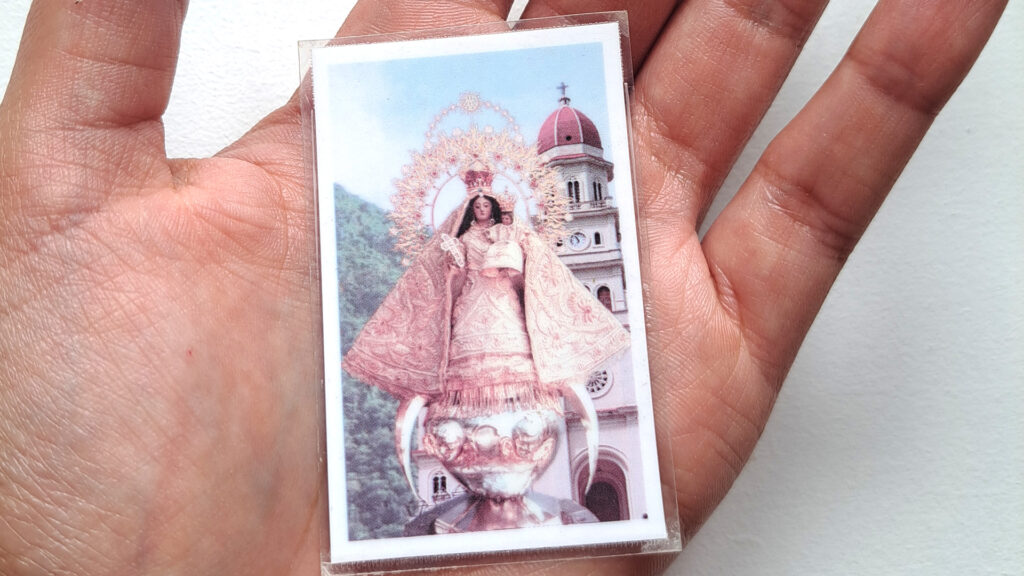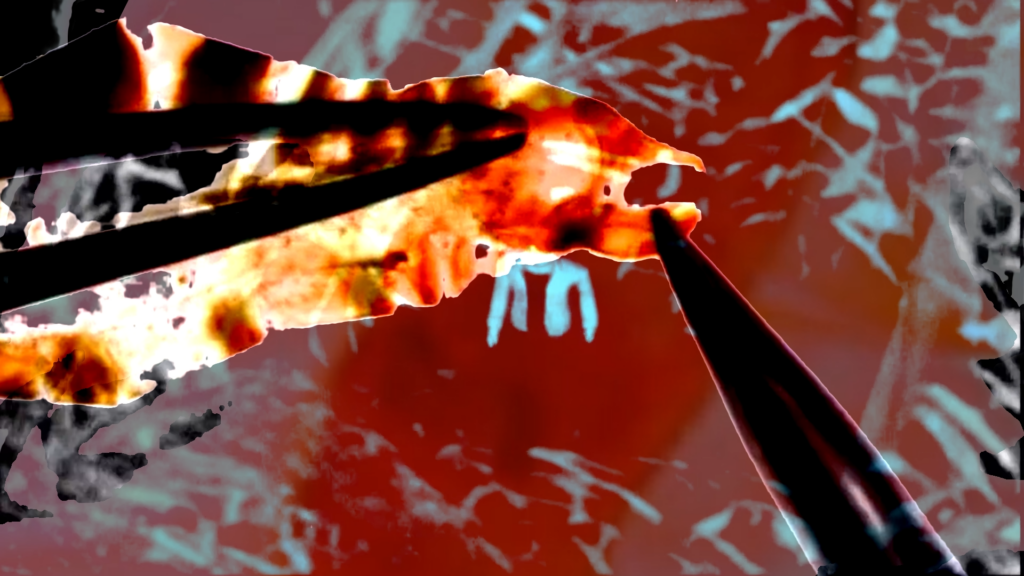Embodying Resistance/Encuerpando Resistencia: unfinished reflections from the Bolivian territory | Anahí Saravia Herrera
by Anahí Saravia Herrera
Interviews with: Mujeres Creando (Danitza Luna), Movimiento Maricas Bolivia, Calle: Bienal del Performance + Alejandra Del Carpio, and Germinal.
Encuerpando Resistencia: unfinished reflections from the Bolivian territory is research that has been in the making since 2021. It is a series of interviews and research focusing on the body as a site of resistance in feminist and performance practices.
I first began the series with an interest in how the body as an individual entity and as a collective one, featured in activism in Latin America. Thinking through the act of using your body and putting it on the line (poner el cuerpo – as you’ll come to read throughout the interviews), as an act of resistance as well as an act of affirming life, using your body in public space as the ultimate way to communicate and be in dialogue with wider society. This legacy is something that has openly bled into performance in Latin America, soaking it in layers of meaning and radical potential. I am not the first person to notice this, and there are plenty of catalogues and books outlining the huge amount of diversity in this growing body of work. However, as was echoed by some of the people I interviewed for this series, it seems as though Bolivia is constantly missing within these archiving projects.
From this interest, I came to more deeply reflect on what the role of performance and creative work is within political movements. How can creative work help us hold political questions, and how can creative means be used within political and community spaces to make change? In this context, I was also interested in knowing more about how the body appeared both in social movements and performance, holding quite physical and symbolic power in a choreography of resistance against the state, patriarchy, racism, capitalism, colonialism, and all those powers that determine how we live our lives. I was interested in how the body could be the locus of political knowledge, drawing from feminist reflections on the power of speaking in the first person. This led me to groups and individuals thinking about the role of the body in social transformation, reflecting on everything the body carries, the identities, lineages, ancestry, and potential for change. It also led me to talk to those who site their creative practice on the streets and outside institutional spaces, as the ultimate stage for democratic encounters with the public.
Speaking from a Bolivian context where the political unrest has been constant since 2019 (and honestly, much before then too), a country full of contradictions, with daily transgressions of violence, as well as resilience and an incredible grassroots power to self-organize, it felt like the right place to ground this thinking. It feels tender to return to where I was born to ask questions that feel so important and to have been warmly received by comrades and collaborators who were willing to share their practices with me.
In 2022/early 2023, during a trip to Bolivia (and on Zoom), I interviewed four people/ groups who were thinking about the intersections of social movements, performance, and creative practice. Each conversation traversed topics from embodiment, being embedded in political contexts, collaborative work, disruptive practices, alternative networks of learning, and performativity. From these conversations, it’s clear that ‘live art’, whatever that is, is something that draws its force from life and has been happening in Bolivia (and beyond) much before it became a term coined by Western art spaces and institutions. (a)Live Art is the way we feel pulsing vitalities, it seeps into practices in our day to day, and it lies within our bodies and deep in our desires to change things. This research is not finished. Bolivia, like any other territory, is constantly shifting. It is just a first glimpse into a whole universe of work.
Out with all categories, let’s roll ourselves in the mud and wade into a swamp of ongoing reflections and thinking around politics, art, and life. There are too many conclusions to draw, I hope to one day synthesise this into a coherent text, in the meantime I’ll let the interviews speak for themselves.
Note on translation:
As someone with access to both Spanish and English, this research has happened across both as well as through local dialects. The final works are edited versions of our conversations, which took place in Spanish with interjections in slang, Aimara and Quechua. The original version of this final text is in Spanglish, with my reflections in English. Spanglish is a language made in migration – I believe there is power in claiming it as a way of thinking through borders, there being a long history in doing this as an act of resistance (very much inspired here by our foremother Gloria Anzaldúa). I have also provided a full English translations of all the texts. The texts in Spanish were edited with the support of Camilla de la Parra, who also consulted on the translation.
Bodies on the line: Creativity as a tool for struggle | Poniendo el cuerpo: Creatividad como instrumento de lucha
Interview with Danitza Luna from Mujeres Creando
Read in Spanglish | Read in English
Mujeres Creando is an anarcho-feminist movement based in Bolivia. The collective is known for creative actions that take place across the city, I interviewed Danitza Luna (a core member of Mujeres Creando) to talk through their creative political practice.
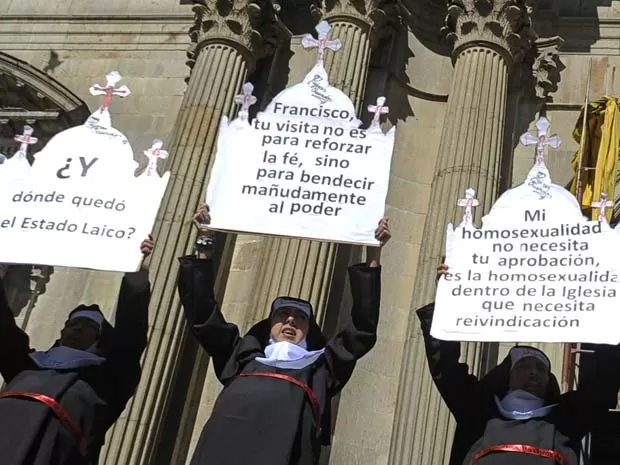
☼☼☼
Pensamiento semilla/ Seed thinking
Interview with Germinal
Read in Spanglish | Read in English
Germinal is a project that was born from a desire to gather and create space for dialogue with those with an interest in that which we call ‘live art’ being something that goes beyond an artistic product, but rather a process of sharing, dialogue, connection and a space where the sensuous and the creative can meet life. The project is taken care of by curanderas Paulina Oña and Tika Michel.
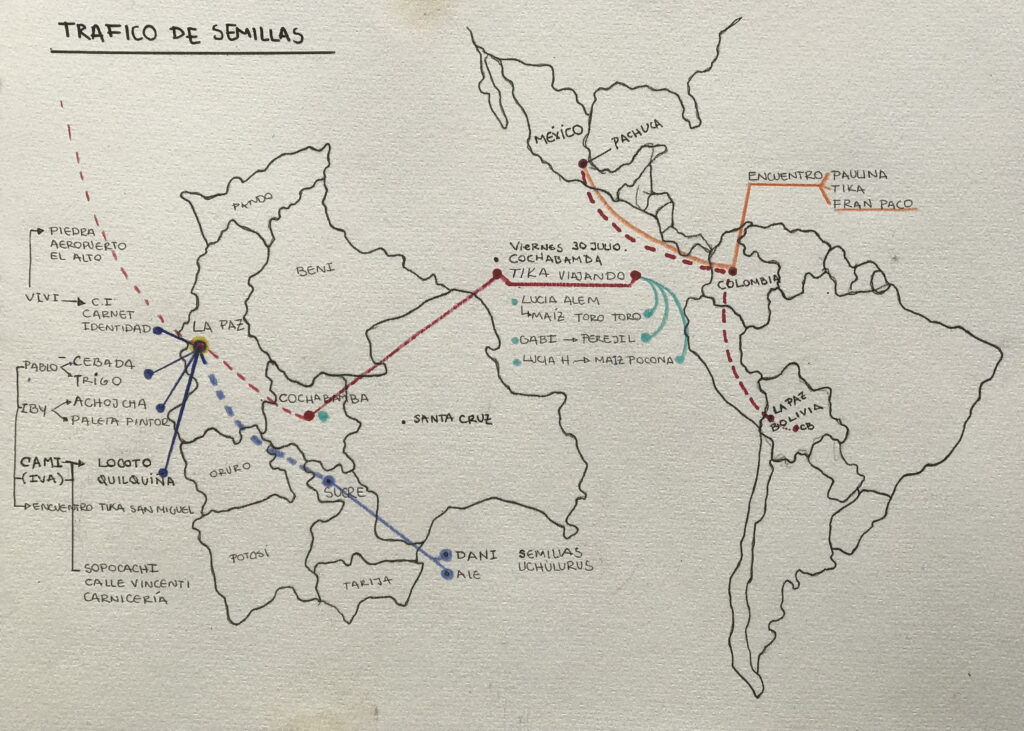
☼☼☼
Marica as a space to talk about queerness, indigeneity, and liberation
Interview with Movimiento Maricas Bolivia
Read in Spanglish | Read in English
Movimiento Maricas Bolivia is a community-based LGBTIQ+ organisation made up of people who self-identify as indian-indigenous-cholas as well as maricas-machorras-travas-cuir, thus situating their critical prespective at the intersection of these identities. It is run by Edgar Soliz Guzmán and Roberto Condori. Their work is multidisciplinary but hinges on the occupation of public space through their street interventions and protests.
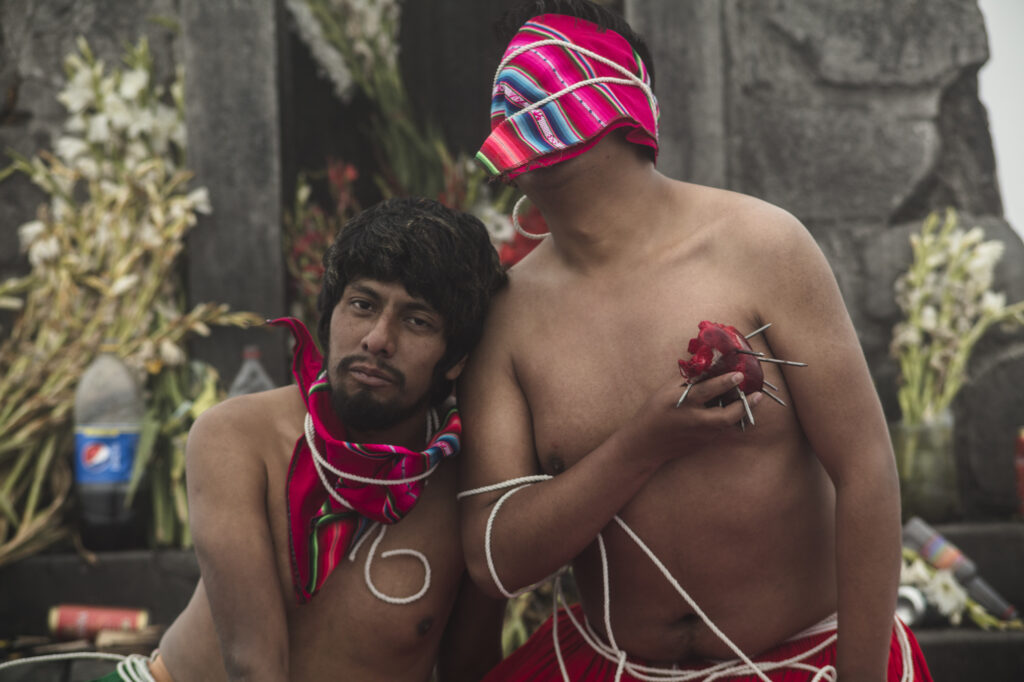
☼☼☼
Desandar la Ciudad | Retracing the City
Work by: Movimiento Maricas Bolivia
Read in Spanish + English
Desandar la Ciudad is a street intervention by Movimiento Maricas Bolivia, with a corresponding poetic text by Edgar Soliz Guzmán. The work highlights homophobia, racism, and colonialism in the city of La Paz, exploring intersecting indigenous and marica identities. It is the first time this text has been translated into English, we’re really honored to be able to share their work in translation.
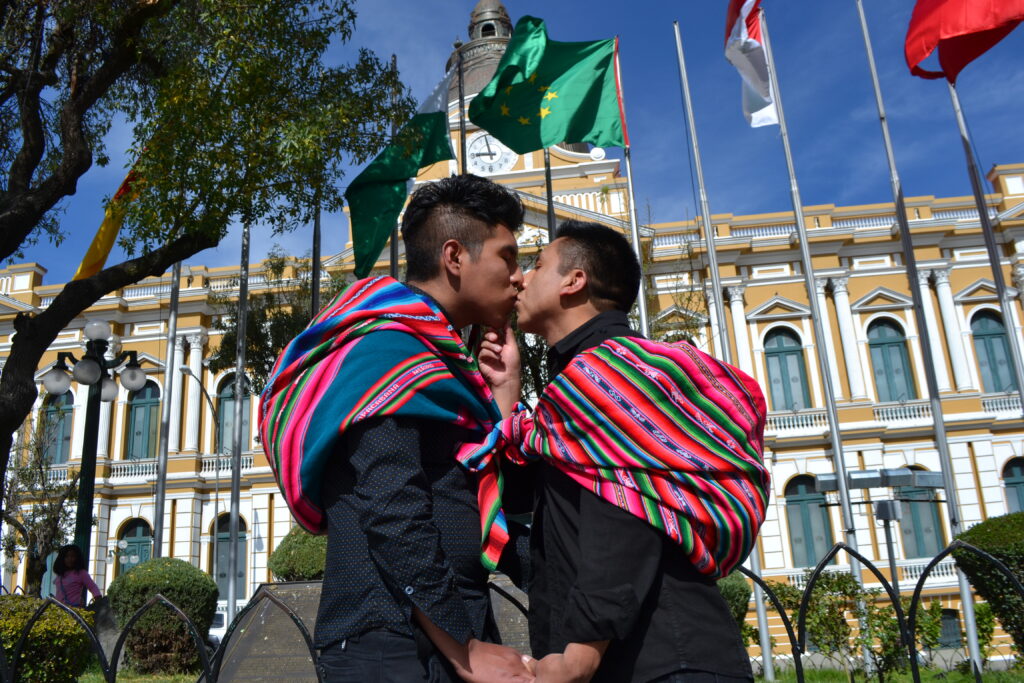
☼☼☼
The street as an artistic/political space | La calle como espacio artístico/político
Interview with Alejandra Del Carpio + Calle: Bienal del Performance
Read in Spanglish | Read in English
Calle: BIenal del Performance is a gathering that happens every two years, where artists from different origins and contexts work on a theme and seek to transmit their reflections through the symbolic, aesthetic, affective, historical, and political languages involved in performance. Its main objective is the occupation of public space through an artistic intervention that reaches the gaze of people who, for different reasons, are kept on the margins of hegemonic and institutionalised art galleries. So far it has taken place in Bolivia and Brazil. It is a project run by artist Alejandra Del Carpio.
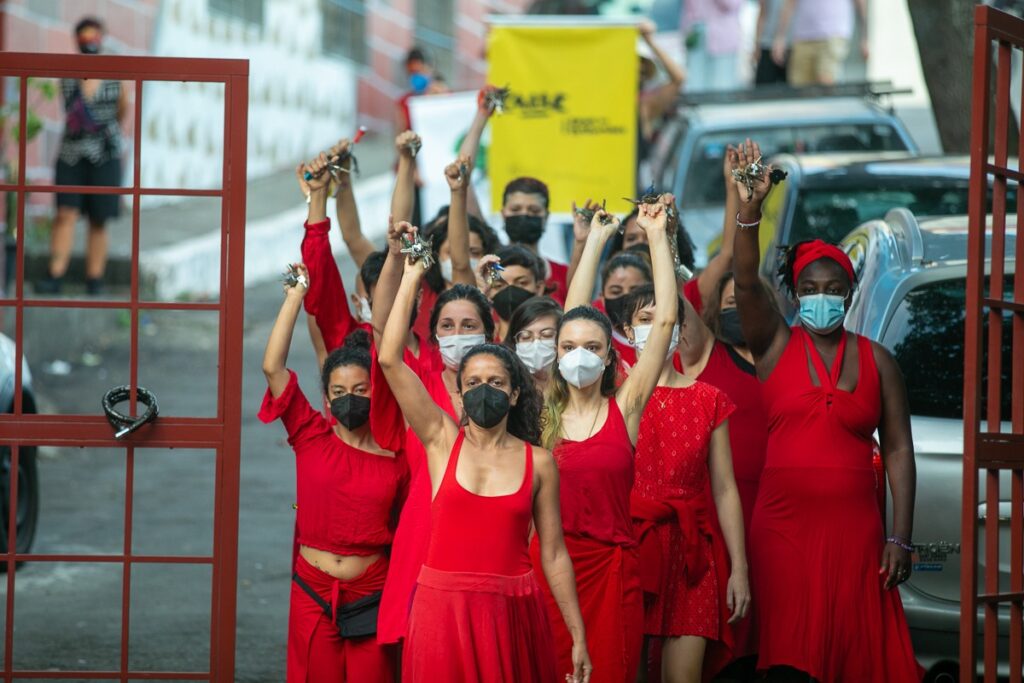
Bios of all contributors to the commission:
Danitza Luna lives and works in La Paz, Bolivia. Luna is a cartoonist, illustrator and graphic designer, graduated in Visual Arts from the Universidad Mayor de San Andrés (Bolivia), specializing in sculpture. Since 2011, she has been part of the anarcho-feminist movement “Mujeres Creando”, one of the most important and influential political platforms in the country, which develops artistic projects and interventions in public spaces, as well as art workshops and educational programs in universities and women’s unions. Mujeres Creando Facebook + Website.
Tika Michel: I’m tika, I’m a graphic designer and interdisciplinary artist, my practices oscillate between walking, fiction and encounters. I’ve been working as an actress since 2004 and since 2013 I’ve been researching expanded artistic languages and performance. In 2018 I studied the Interdisciplinary Masters in Theatre and Live Arts at the National University of Colombia and as a sequel to this experience, in 2021 Germinal was born, a research space for the living: an undisciplined, horizontal, and collective space that continues to expand. I have worked with collectives in residencies and collaborations in several Latin American countries. I currently live in Cochabamba-Bolivia, carrying out collaborative projects and artistic research. IG: @germinalsemillerobolivia
Paulina Oña: My name is Paola Oña, I am the fifth of seven children, I was born in Bolivia after my parents and my older brothers and sisters migrated from Buenos Aires-Argentina, at the beginning of the dictatorship processes in South America and with them, inflation. I have a profession that I never got to practice (I’m a lawyer), but that made it possible for me to study the Interdisciplinary Master’s Degree in Theatre and Live Arts at the University of Colombia in 2017: I decided to migrate because I wanted to study. I am Paulina Oña, an interdisciplinary artist. My artistic practice is made up of a series of gestures that make up not only my sensitive sides, but also the spheres of resistance that constitute me as a migrant, a sudaca, the daughter of a plumber and a seamstress, a witch in a non-binary becoming (naming myself a woman makes me more and more conflicted). My artistic practice oscillates between the fiction of words and the generation of images and sensations, between the real and the virtual, and between theatricalities and performativities. IG: @germinalsemillerobolivia
Movimiento Maricas Bolivia is a community-based LGBTIQ+ organisation made up of people who self-identify as indian-indigenous-cholas as well as maricas-machorras-travas-cuir. It was founded in May 17, 2010 with the broadcasting of its first radio program called Soy Marica y Qué (2010 – 2010), broadcast through Radio Deseo in the city of La Paz. Subsequently, the program moved to the city of El Alto under the name Nación Marica (2016). In 2022, Movimiento Maricas Bolivia produced the audiovisual program and street interventions Nación Marica Callejera that has more than thirty-three programs recorded in public spaces across La Paz and El Alto, featuring thirty-three guests who reflect on social, political, sexual, and indigenous issues in the country. This program is broadcast through their Youtube Channel and is the only audiovisual program whose signature discursive approach and embodied identities are indigenous-chola, as well as marica-machorra-trava-cuir. Nación Marica has received the “Periodismo en Derechos Humanos” award (2016 and 2017) from Católicas por el Derecho a Decidir for the radio reports Nuestra venganza es ser felices: historias de amor y resistencia política homosexual (Joy is our revenge: love stories and queer political resistance) and Morir por ser mujer trans en Bolivia: Dayana Kenia, una historia tan lejos de la justicia (Dying for being a trans woman in Bolivia: Dayana Kenia a story far away from justice. They have also received the “Periodista Sin Riesgo” award (2018) from Católicas por el Derecho a Decidir and Alianza por la Solidaridad for the radio report ¿Abortan todas, abortan las lesbianas? Situación del aborto en Bolivia desde una mirada lésbica. (Do all women abort? Do lesbians abort? Abortion in Bolivia from a lesbian perspective.) IG: maricas_bolivia, maricasbolivia.wordpress.com
Alejandra Del Carpio is a multidisciplinary artist between the performing arts, performance, and visual arts, her work explores feminism, decolonization and the investigation of her ancestry. She is the founder of the Bienal Calle, and intends to continue to grow the project both in Bolivia and Brazil, and if possible, to expand the seed to other Latin American countries for future editions. She hopes that the capacity and resources for the event will get better and better, because the artists are excellent and the pieces presented are transformative. IG:@calle.performance
Camila de la Parra is a linguist, writer and translator born in Mexico City (1995). She studied Hispanic Language and Literature at the UNAM before migrating to the UK, where she graduated with a Linguistics degree from University College London. In 2022, she won the poetry award at the first writing competition for the Mexican diaspora, organized by the Mexican Foreign Office. Her creative works have been published in Bakwa Magazine, Aerie International, the UCL Publisher’s Prize 2019 anthology, and the Premios Madroño 2023 anthology. As an editor and translator, she has worked with the Royal Ballet, UNICEF, Wellcome Trust, Paax Festival and Morelos Dance Festival, and edited Luis Cotto-Vasallo’s most recent bilingual book for children, The King’s Baker. Camila is also a literary consultant for emerging authors from Latin America. An intersectional feminist at heart, language is her tool of choice to do good in the world. IG: @camila.delaparra | Substack: camiladelaparra.substack.com
Anahí Saravia Herrera (she/her) is (depending on the day) a writer, producer, creative researcher, and publisher-in-training. She is interested in exploring activism and histories of resistance and how we can use creative means to make critical perspectives public. She works at the intersection of community organizing, art making, and cultural work. Currently, Anahi is thinking about and researching embodiment, performance, and feminist activism in Latin America. She is a part of the curatorial-research project peformingborders and is in a collaborationship with Jemima Yong with whom she’s developing a publishing-as-performance-practice. She also organises with feminist migrant-led campaign groups. Anahi is physically based in the “west” but as much as possible, creates work situated in the Latinx diaspora, she was born in La Paz, Bolivia. IG: anahi_saravia
